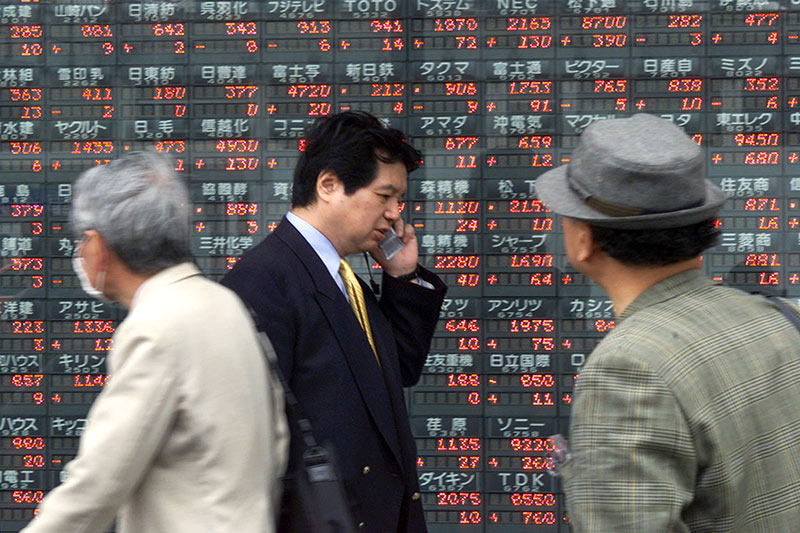US Bonds and Stocks Halt Rally Amid Inflation Concerns
As Monday dawned, Asian equity markets were met with resistance following a pause in the rally of US bonds and stocks last Friday. The halt was primarily driven by worries that the Federal Reserve may not be able to control inflation effectively.
Australian equities futures barely budged while Hong Kong registered a drop of 0.7%. A similar trend was observed among Chinese stocks listed in the US which declined over 2%. Notably, Japanese markets remained closed due to a holiday.
Meanwhile, contracts for S&P 500 and Nasdaq 100 saw marginal decreases as trading kicked off on Monday in Asia. These indexes had reported minor losses on Friday as traders pointed towards consolidation after an upswing that propelled S&P 500 towards its best week since mid-June this year.
Japanese yen maintained stability post comments made by Bank of Japan Governor Kazuo Ueda expressing high uncertainty about the state of both the US and global economies after attending a Group-of-Seven meeting. He further indicated no significant change regarding Japan’s bond-market functionality since June’s monetary policy meeting.
The US bond market responded swiftly on Friday when consumer sentiment surged unexpectedly close to two-year highs alongside rising short-term price expectations – leading two-year Treasury rates upwards by fourteen basis points against earlier declining trends during previous days' trades.
Market swaps suggest a strong likelihood for Fed raising the benchmark rate again later this month followed potentially one more time before ending the current cycle – based on positive pricing data outcomes. Investors also cheered earnings results from several major players including JPMorgan Chase & Co (NYSE:JPM), Wells Fargo & Company (NYSE:WFC), Citigroup Inc (NYSE:C), all surpassing lowered analyst estimates comfortably while UnitedHealth Group Incorporated (NYSE:UNH) profits eased concerns surrounding escalating medical costs.
China's Economy Faces Headwinds as Post-Pandemic Surge Fades
Fresh economic figures from China set to be released this week are expected to reveal that its post-pandemic rebound is rapidly losing steam, leading to fresh calls for stimulus initiatives.
Earlier this year, China saw robust economic performance following the easing of stringent COVID-19 restrictions. However, recent indicators highlight a significant decline in economic momentum due to soft domestic and international demand coupled with an ongoing downturn in its traditionally influential property market.
According to financial experts surveyed by Reuters, China - the globe's second-largest economy - probably achieved just 0.5% growth in Q2 compared with Q1 on a seasonally adjusted basis. Separate June data is anticipated to show continued cooling trends across industrial production, retail sales, and fixed asset investment sectors.
Some financial analysts attribute this slowdown to lingering impacts from long-term strict COVID measures and regulatory constraints on key sectors such as property and technology – despite government attempts at reversing some curbs recently for economic support.
Amidst prevailing uncertainties, households and private businesses are adopting conservative strategies focusing more on increasing savings or reducing debts rather than making fresh purchases or investments. The issue of youth unemployment has reached unprecedented levels.
On an annual comparison basis, however, GDP may have seen 7.3% growth between the April-June period versus last year’s figure which represented only a 4.5% increase.
Meantime, data revealed last Thursday showed that Chinese exports dipped most sharply within three years during June; registering a worse-than-expected fall of 12.4%, reflecting global cooling demands.
